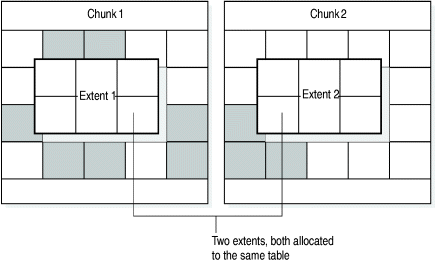
In relational database systems, a table is a row of column headings together with zero or more rows of data values. The row of column headings identifies one or more columns and a data type for each column.
When users create a table, the database server allocates disk space for the table in a block of pages called an extent (see Extents). You can specify the size of both the first and any subsequent extents.
Users can place the table in a specific dbspace by naming the dbspace when they create the table (usually with the IN dbspace option of CREATE TABLE). When the user does not specify the dbspace, the database server places the table in the dbspace where the database resides.
Users can also fragment a table over more than one dbspace. Users must define a distribution scheme for the table that specifies which table rows are located in which dbspaces.
Users can also fragment a table over more than one dbspace. Users must define a distribution scheme for the table that specifies which table rows are located in which dbspaces. For more information about distribution schemes, see the IBM Informix: Database Design and Implementation Guide.
A table or table fragment resides completely in the dbspace in which it was created. The database server administrator can use this fact to limit the growth of a table by placing a table in a dbspace and then refusing to add a chunk to the dbspace when it becomes full.
A table, composed of extents, can span multiple chunks, as Figure 61 shows.

For advice on where to store your tables, see Disk-Layout Guidelines and your IBM Informix: Performance Guide.
Home | [ Top of Page | Previous Page | Next Page | Contents | Index ]